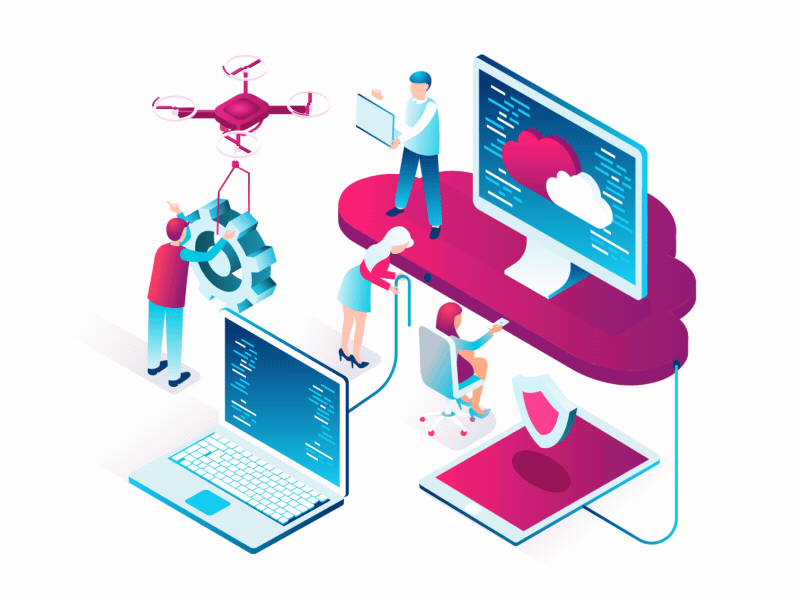
Business Security

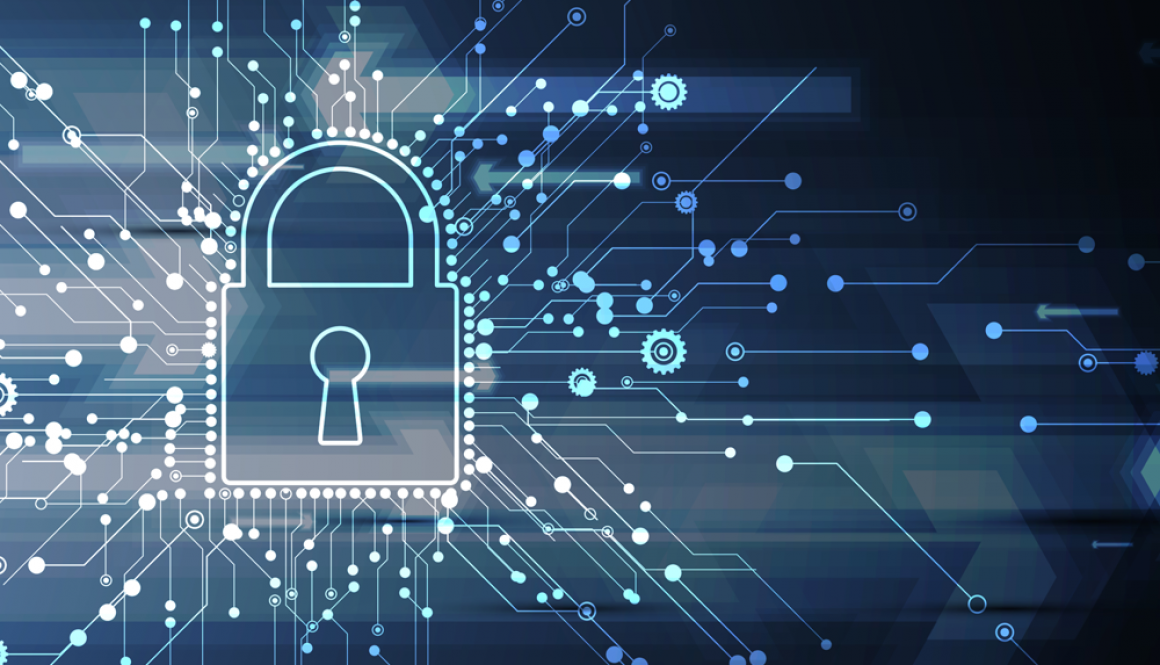

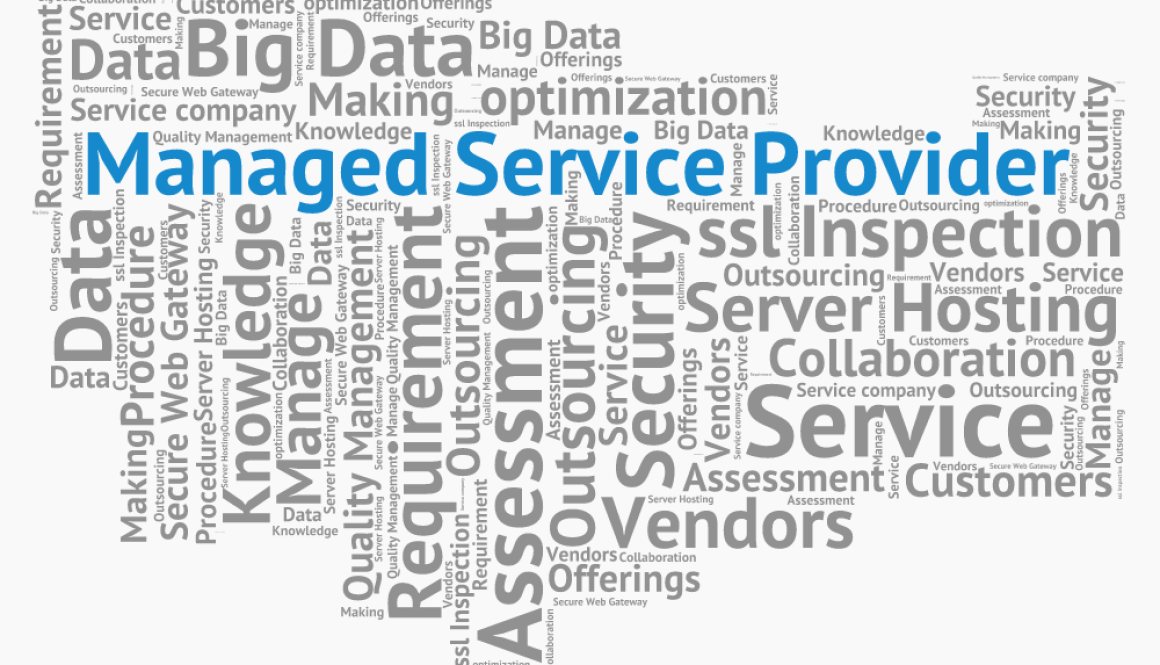
How an MSP Strengthens Your Business’s Cybersecurity Posture
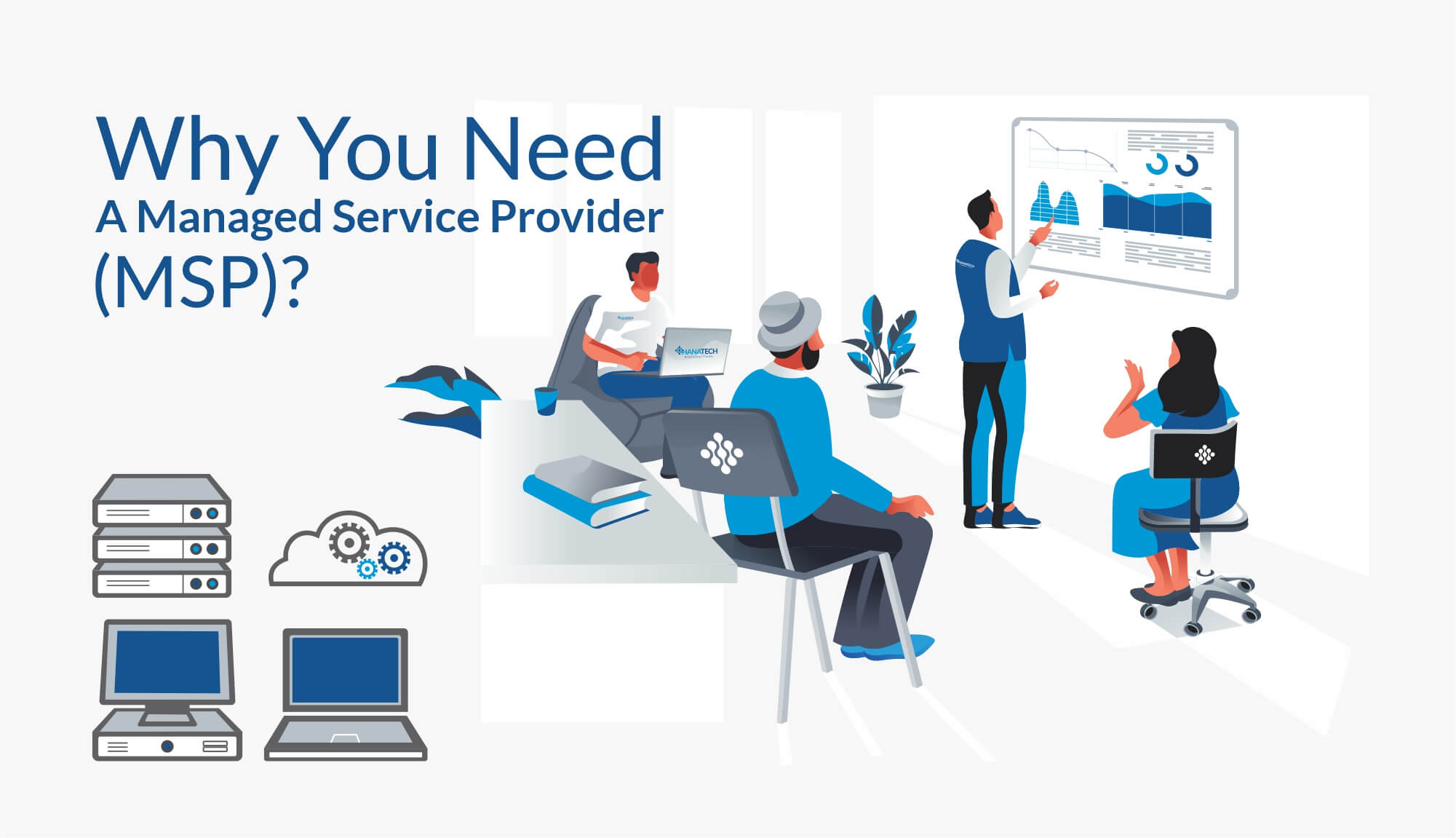
Cybersecurity is no longer optional—it’s a necessity. With threats like ransomware, phishing, and data breaches on the rise, businesses must take a proactive approach to security. But should you handle cybersecurity in-house or partner with a Managed Service Provider (MSP)?
1. Do You Have the Budget for an In-House Cybersecurity Team?
Hiring and maintaining an in-house cybersecurity team requires significant investment in salaries, training, and cutting-edge security tools. MSPs provide enterprise-grade security at a predictable cost, making cybersecurity more affordable without sacrificing quality.
2. Can Your Business Handle 24/7 Threat Monitoring?
Cyber threats don’t follow business hours. If your company lacks the resources for round-the-clock monitoring and rapid incident response, an MSP ensures constant protection, identifying and stopping threats before they escalate.
3. Are You Prepared for Compliance & Regulatory Requirements?
Industries such as finance, healthcare, and e-commerce must follow strict cybersecurity regulations (e.g., GDPR, HIPAA, PCI-DSS). MSPs specialize in compliance management, ensuring your business meets legal requirements and avoids costly fines.
4. Do You Have the Right Security Tools & Expertise?
Cybercriminals continuously evolve their tactics, and keeping up requires advanced security solutions like intrusion detection, endpoint protection, and AI-driven threat analysis. MSPs provide access to top-tier security tools and skilled experts without the overhead of purchasing and managing them yourself.
5. How Fast Can You Recover from a Cyberattack?
A cyberattack can lead to data loss, system downtime, and reputational damage. MSPs offer disaster recovery and backup solutions, ensuring your business can quickly restore operations and minimize losses.

Key Features of an Ideal MSP
- Offer a flexible service model
- Take a shared approach to managed services
- Have a solid strategic relationship with either your solutions or cloud provider
- Have many consultants available
- Offer advanced services
- Utilize remote monitoring and management for proactive maintenance
- Have a solid backup and disaster recovery strategy
- Have an established escalation path and provide a secondary contact
- Work with your legal team to address compliance issues
The Bottom Line
If your business lacks the budget, expertise, or resources for comprehensive cybersecurity, partnering with an MSP is the smart choice. By outsourcing cybersecurity to professionals, you get 24/7 protection, cost savings, compliance support, and peace of mind, allowing you to focus on growing your business. As cyber threats continue to rise, investing in an MSP is a strategic move that enhances your cybersecurity posture, compliance, and peace of mind.
🚀 Stay Secure. Stay Ahead. Consider an MSP Today! 🚀
Ready to enhance your cybersecurity posture?
🔹Contact Applied Technology today and take the first step towards a more secure future! 🔹

MSP’s to Enhance Business Efficiencies
A Managed Service Provider is a company that offers a range of IT services to businesses on an ongoing basis.
Instead of handling IT tasks in-house, companies outsource their IT needs to an MSP who will proactively manage and support their systems, networks, and technologies. MSPs typically offer services like network management, cybersecurity, data backups, cloud services, helpdesk support, and system monitoring.

Here’s how an MSP can enhance your business:
- Cost Savings: MSPs provide affordable IT services with a predictable monthly fee, avoiding the need for an in-house team.
- Expertise: Access to specialized knowledge and advanced tools without hiring or training staff.
- Proactive Monitoring: Continuous system monitoring to prevent downtime and resolve issues before they escalate.
- Scalability: Services can easily grow with your business, adapting to new needs.
- Cybersecurity: Robust protection against cyber threats, ensuring data security.
- Focus on Core Business: Free up internal resources to focus on strategic goals instead of tech issues.
- Disaster Recovery: Backup systems and recovery plans to minimize data loss and downtime.
How Using an MSP Works for Your Business:
When you partner with an MSP, they first assess your current IT setup and identify areas for improvement. They’ll then implement tailored solutions to fit your specific business needs. Ongoing support and maintenance are part of the package, so you don’t have to worry about tech issues disrupting your operations. With a dedicated team managing your IT, your business can run more efficiently, securely, and without the stress of dealing with tech problems. The MSP acts as an extension of your business, providing continuous support to help your company grow and evolve.
Overall Statement:
By leveraging the expertise of an MSP, businesses can offload their IT management, ensuring systems are secure, up-to-date, and running smoothly. This allows them to focus on growth and innovation, rather than getting bogged down by technical challenges, leading to increased productivity, reduced risks, and long-term success.
Ready to take your business to the next level?
Let us handle the tech while you focus on what you do best. Reach out to us today at sales@atgfw.com or call 260-482-2844.
We’re here to help you grow!
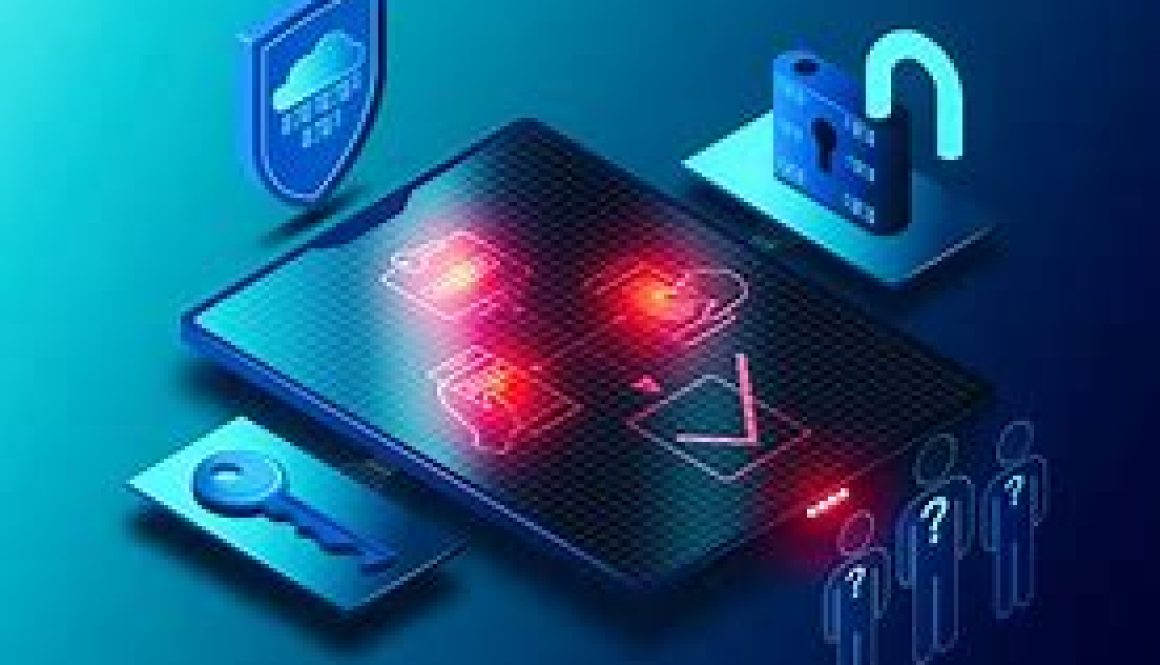
Implementing MFA: A Layered Approach to Securing Data
What Is MFA and How Is It Different from 2FA?
Multi-factor authentication (MFA) is a security process requiring two or more verification factors to gain access to a system. It’s an enhancement of two-factor authentication (2FA), which typically combines two elements (e.g., password + a one-time code). MFA goes further, allowing for three or more factors, such as biometric data or behavioral analysis, for an additional layer of security.
Why Implement MFA?
MFA significantly reduces the likelihood of unauthorized access by adding layers of verification beyond passwords, which are vulnerable to phishing and breaches. Businesses use MFA to protect sensitive applications, data, and systems, especially for remote or traveling employees who connect from varied locations.
For example, a traveling employee accessing company files from a hotel Wi-Fi network is a prime target for cybercriminals. Without MFA, a stolen password could lead to a full system compromise. With MFA, even if a password is stolen, the attacker would still need a second (or third) factor—like a hardware key or fingerprint—to gain access.
Best Practices for Implementing MFA:
- Select Reliable MFA Methods:
Use secure options like:- Hardware security keys (e.g., YubiKeys)
- Biometric authentication (e.g., fingerprint or facial recognition)
- Push notifications through secure apps (e.g., Microsoft Authenticator or Duo).
- Avoid Weak MFA Methods:
Avoid SMS-based authentication, as text messages can be intercepted through SIM-swapping or phishing attacks. - Ensure Compatibility:
Choose solutions that integrate seamlessly with your existing tools and workflows. - Educate Employees:
Train your staff on the importance of MFA and how to use it effectively.
MFA is a critical investment to protect your business in today’s evolving cybersecurity landscape. Ensure your data stays safe by implementing robust, layered defenses.
PRO TIP
Check to see whether your email accounts, banks, healthcare providers, and other important accounts offer MFA and enable it by default. If they don’t, ask them why not. It’s your information they’re putting at risk!
Take Action Today!
Your company’s security is more than a simple password. Implementing MFA is a vital step toward safeguarding your business. Let Applied Technology Group help you create a secure, layered defense strategy tailored to your needs. Contact us today at Sales@atgfw.com or 260.482.2844 to get started.
“Passwords vs. AI Hackers: Your First Line of Defense in 2025”
In a world where AI hackers never sleep, your best weapon is preparation.
In 2025, advanced AI hackers are pushing cybersecurity to the brink. A strong password is your first line of defense in this digital arms race. Protecting your data starts with mastering the basics: strong passwords. Here’s why they matter and how to stay ahead:
- AI Hackers Are Smarter Than Ever: Machine learning enables them to guess weak passwords in seconds, exploiting simple combinations like “123456” or “password.”
- What Makes a Password Strong:
- At least 12 characters long.
- A mix of uppercase letters, lowercase letters, numbers, and symbols.
- Unique for every account—no repeats!
- Leverage Tools for Extra Security:
- Use password managers to generate and store complex passwords.
- Enable two-factor authentication (2FA) to create an additional security layer.
- Avoid Common Mistakes:
- Don’t use personal info (birthdates, pet names, etc.).
- Steer clear of dictionary words or predictable patterns like “abc123.”
Don’t let AI hackers catch you off guard, because when it comes to cybersecurity, it’s better to be paranoid than sorry!
Partner with Applied Technology Group for robust cybersecurity solutions that safeguard your data, accounts, and peace of mind. From password management to comprehensive security strategies, we’ve got you covered.
📞 Contact us now to learn how we can help protect your organization against evolving threats 260.482.2844 | Sales@atgfw.com.
Let’s secure your future together!

Small Business Cybersecurity Risks
Cybersecurity Insurance & IT Services
Digital technology continues to evolve which can result in cybersecurity risks. The good news is these changes bring a multitude of new ways that businesses can grow. But along with these developments, there are also the growing risks of online threats. No matter how you try to protect yourself, there will always be a prevailing danger every time you enter the online environment. Even large multinational corporations sometimes become victims of cyber-attacks. So, it’s no challenge to breach small businesses and cause cybersecurity risks.
Addressing Inadequate Security Measures
The good news is those small businesses are not helpless despite the alarming rise in the volume and severity of cyber-attacks in recent years. We can apply several easy but effective steps to mitigate cybersecurity risks. If you look at the most common reasons businesses fall victim to online attacks, it almost always boils down to poor security measures.
For instance, many employees still use weak passwords and have not received training on internet security measures. Many companies use old verification systems or simple authentication methods, leaving their data vulnerable to online attackers.
These are issues that even small businesses can address using an up-to-date cybersecurity strategy. If you don’t have the means to implement this kind of protection, you can always enlist the services of a managed service provider specializing in cybersecurity solutions. We’ll tell you more about this at the end of this blog.
How to Bolster Online Security
If your business gets infiltrated by hackers, it can cost a lot in different aspects. You can lose customers, lose revenue, and experience slow operations. It might even force you to shut down your business in case of customer or vendor data loss. To avoid this trouble, you can take some simple steps right now to bolster online security and prevent online attacks from ruining your business.
Train Your Employees
Most hackers do not directly attack a company’s database or network but go through the weakest path of entry: the employees. Seemingly harmless emails and links might be traps set up by online criminals to get into your system. Every employee must be wary of these suspicious links and know-how to identify possible online threats in various forms.
Update Your System
Technology changes rapidly. The system that once gave you ironclad protection may now be a flimsy wall of defense. Once you miss an update to your system, your entire business will become vulnerable to new malware that hackers have recently developed. It is therefore critical to ensure that your security is always up to date.
Have a Reliable Backup and Recovery Plan
Despite all your protective measures to mitigate cybersecurity risks, you can’t be 100% protected at all times. Therefore, it is vital to have a reliable backup system and quick recovery plan to bring your system back in order in case of an attack. A managed services provider can help you set up a recovery strategy to minimize your losses and get you back into regular operation as soon as possible.
Partnering with an MSP Can Significantly Reduce Your Cybersecurity Risks
Cybersecurity threats will always exist, but there are plenty of ways to defend your business against these threats, like partnering with a dependable Managed Service Provider.

Fixing Your Weakest Link: Your Employees
Phishing: Part 3
You can have every piece of security hardware in the books: firewall, backup disaster recovery device, and even anti-virus. However, your employees will still be the biggest vulnerability in your organization when it comes to phishing attacks. How do you mitigate as much risk as possible?
- Create and Strictly Enforce a Password Policy: Passwords should be complex, randomly generated, and replaced regularly. In order to test the strength of your password go to howsecureismypassword.com. (This is a perfectly safe service sponsored by a password protection platform that tells you how long it would take a hacker to decode your password.) When creating a password policy, bear in mind that the most prevalent attacks are Dictionary attacks. Most people utilize real words for their passwords. Hackers will typically try all words before trying a brute force attack. Instead of words, use a combination of letters, numbers, and symbols. The longer the password, the stronger it is. While it’s difficult to remember passwords across different platforms, try not to repeat passwords. This will protect all other accounts in the event of a breach on one of your accounts.
- Train and Test Your Employees Regularly: Educate your employees on how they can spot a phishing attack. Then, utilize penetration testing (this is a safe phishing attack orchestrated by your IT company to see how employees respond) and how well they do. If employees fall for phishing attempts then send them through training again. We recommend doing this on a quarterly basis to ensure that your employees stay on their toes and you should provide education on the latest attacks.
- Create a Bring Your Own Device Policy and Protect all Mobile Phones: You can safeguard as much as humanly possible on your network, but your employees are all walking in with cell phones. Are they allowed to get work emails on their phones? What about gaining access to the network remotely? Cell phones create a big black hole in security without proper mobile device management and mobile security.
- Perform Software Updates Regularly: Make sure that your software is up-to-date with all the latest security patches. Holding off on updates means that you’re leaving yourself open to vulnerabilities that have been discovered and addressed.
- Invest in Security: Security is not something for cost savings. Home-based hardware is not sufficient, and you, at the very least need a quality firewall and backup device. Invest in your employee’s training, ongoing security updates, and maintaining a full crisis/breach plan.
There are two things that aren’t going away in any business, employees and security threats. Make sure that you’ve taken care of everything you can to avoid falling victim to these attacks.

How to Spot A Phishing Attack
Phishing: Part 2
Would you know if you were the subject of a phishing attack? Many people claim that they’d be able to tell right away if they received an email from an illegitimate source. If that were the case, there wouldn’t be 1.5 million new phishing websites every month. A 65% increase in attacks in one year! Hackers would have moved on to their next idea for swindling people out of their identities and money. How do you spot a phishing attack and avoid falling victim yourself?
Look for these red flags:
Sender Email Address: Always check to make sure that the email address is legitimate. Amateur hackers will send things from Gmail or Hotmail accounts and hope you don’t notice. More sophisticated hackers will closely mimic an actual email domain, like amazonprime.com rather than amazon.com. Double check the email address before responding, clicking, or opening, even if the from name appears correct.
Discrepancies in Writing Format: If the attack is coming from overseas, you’re likely to notice some small issues in writing format, like writing a date as 4th April, 2019 rather than April 4, 2019. While this is subtle, it should be a red flag.
Grammar Issues: We all fall victim to the occasional typo, but if you receive an email riddled with grammar and spelling mistakes, consider the source. It’s likely from a hacker, especially if the email supposedly comes from a major organization.
Sender Name: This one is also difficult to track, but phishing emails will typically close with a very generic name to avoid raising suspicion. You should recognize the people that send you emails, or at the very least clearly understand their role at the organization.
Link Destination: Before you click on any link in an email be sure to hover over it. The destination URL should pop up. Check out the domain name of this URL. Similar to the sender email address, make sure that this address is legitimate before clicking.
Attachments: Is it realistic to expect an attachment from this sender? Rule of thumb, don’t open any attachment you don’t expect to receive, whether it’s a Zip file, PDF or otherwise. The payload for a ransomware attack often hides inside.
Email Design: A kooky font like Comic Sans should immediately raise red flags, especially if you don’t clearly recognize the sender.
Links to Verify Information: Never ever click on a link to verify information. Instead, if you think the information does need updating go directly to the website. Type in your email and password, and update your information from the Account tab. Always go directly to the source.
Odd Logo Use: Hackers try their best to mimic a websites’ look and feel. Oftentimes, they get very close; but they won’t be perfect. If something feels off, it probably is.
While there is no fool-proof method for avoiding falling victim to a phishing attack, knowing how to spot likely culprits is one step in the right direction. We’ll cover other protective measures to reduce your risk of falling victim to phishing attacks in our next blog.
